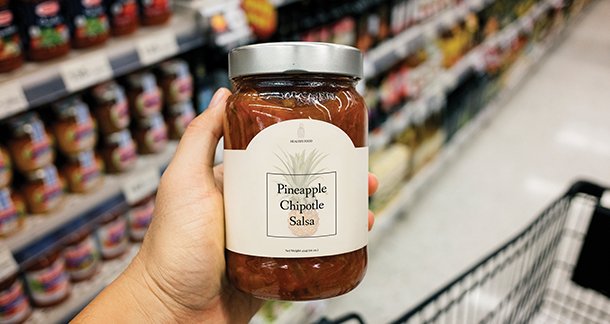By Anjali Lokare
Clear and informative packaging labels are crucial in today’s food industry for enhancing consumer trust and confidence. These labels help build a transparent relationship between consumers and brands, essential for developing brand loyalty. When consumers can easily understand what they are purchasing, they are more likely to trust the brand and repeatedly choose its products. Transparent labeling reassures consumers that the brand is honest and committed to quality, which is vital in a market where trust plays a significant role in purchasing decisions.
Informative labels facilitate informed purchase decisions by providing essential details such as nutritional information, ingredients, allergens, and expiration dates. This information enables consumers to make choices based on their dietary needs and preferences. For instance, individuals with specific dietary restrictions, such as gluten intolerance or nut allergies, rely on clear labels to avoid adverse reactions. Moreover, labels that highlight health benefits or certifications (e.g., organic, non-GMO) guide health-conscious consumers in their purchasing decisions, allowing them to choose products that align with their health goals and ethical standards.
Accurate labeling is also crucial for compliance with food safety regulations and standards set by authorities like the Food Safety and Standards Authority of India (FSSAI). Non-compliance can lead to legal issues, fines, and significant damage to a brand’s reputation. In a market with increasing regulatory scrutiny, ensuring that labels meet all legal requirements is not just a matter of legal compliance but also of maintaining consumer trust and brand integrity. Labels that clearly indicate allergens, additives, and preservatives help consumers avoid products that may cause adverse reactions or health issues, contributing to overall public health safety. Proper labeling of storage instructions and usage guidelines ensures that consumers handle and consume food products safely, reducing the risk of foodborne illnesses.

Moreover, labels that provide information about the environmental impact of the product or its packaging can encourage consumers to make more sustainable choices. With growing environmental awareness, consumers are increasingly looking for products that align with their values. Labels detailing recyclable or biodegradable packaging materials can drive eco-conscious purchasing behavior, helping consumers feel they are making a positive impact through their buying choices. This trend also pushes companies to adopt more sustainable practices, benefiting the environment and enhancing their market appeal.
To educate consumers about reading and understanding labels, several initiatives can be undertaken. Public awareness campaigns are an effective way to reach a broad audience. These campaigns can utilize various media channels like TV, radio, social media, and print to disseminate information widely. Collaborating with health and nutrition experts to create content that explains the key elements of food labels and their significance can make these campaigns more credible and impactful.
Workshops and educational programs are another effective method. Organizing workshops, seminars, and webinars can provide hands-on training on interpreting food labels. These sessions can target various groups such as schools, colleges, community centers, and corporate offices, ensuring that a diverse demographic is educated. Partnering with dietitians and nutritionists to conduct these sessions can provide participants with practical tips for making healthier food choices, emphasizing the real-world benefits of understanding food labels.
Developing interactive digital tools and mobile apps is another innovative approach to consumer education. User-friendly mobile apps and online tools that help consumers decode food labels can offer personalized recommendations based on individual dietary needs and preferences. For example, an app could allow users to scan a product’s barcode and receive detailed information about its ingredients, nutritional value, and any potential allergens. Augmented reality (AR) technology can also be used to create interactive packaging that provides additional information when scanned with a smartphone, making the learning process engaging and accessible.
In-store education initiatives can also play a significant role in consumer education. Training retail staff to assist customers in understanding food labels and making informed choices can provide immediate support where it is most needed. Providing point-of-sale materials such as brochures and posters that explain labeling information can reinforce this learning. Setting up information kiosks or interactive displays in stores where consumers can learn about labeling and nutrition can enhance the shopping experience and encourage informed purchasing.
Collaboration with schools and educational institutions can ensure that food label education starts early. Integrating food label education into school curriculums can instill the habit of reading labels from a young age. Using engaging and age-appropriate materials to teach students about nutrition and food safety can make the learning process enjoyable and memorable. School-based competitions and projects focused on food labeling can encourage student participation and learning, creating a generation of informed consumers.
Creating online content and resources is another effective strategy. Brands can develop dedicated sections on their websites or social media pages that offer detailed explanations of labeling terms and their meanings. Including FAQs, infographics, and videos can make the content accessible and engaging. Sharing success stories and testimonials from consumers who have benefited from understanding food labels can highlight the positive impact on their health and well-being, encouraging others to follow suit.
Finally, partnerships with government bodies, food industry associations, and NGOs can amplify the reach and impact of consumer education initiatives. Working with these organizations to develop standardized labeling guidelines and educational materials ensures that resources are widely disseminated and easily accessible to the public. Advocating for policies that mandate clearer and more informative labeling benefits consumers and promotes public health.
In conclusion, clear and informative packaging labels are vital for consumer trust, informed decision-making, regulatory compliance, and public health. Through a combination of public awareness campaigns, workshops, digital tools, in-store education, school programs, online resources, and strategic partnerships, we can empower consumers to make informed food choices, leading to better health outcomes and greater trust in food brands.
Submitted by:
Anjali Lokare
Food Consultant
Farm to Fork Solutions, Pune.
Author’s Bio:
Anjali Lokare, a Pune-based Food Consultant with an MSc in Nutrition and Food Processing, currently works with Farm To Fork Solutions, CASMB, FoodTech Pathshala and serves on the Editorial Board of Purnabramha Magazine. Certified in food safety and ISO 22000:2018.



